There are more than 33,000 species of fish on this planet, but not all of them can be described as speedy. The fastest fish can put up a great fight when you’re trying to catch them. Some of the fastest fish that we detail below can move faster than the average highway speed limit, while others move just as quickly out of the water as they do beneath the surface.
Everything you will learn here
Top 10 Fastest Fish
Ready to learn about some of the ocean’s quickest creatures? Here’s a detailed list of the fastest fish under the sea:
10. Shortfin Mako Shark
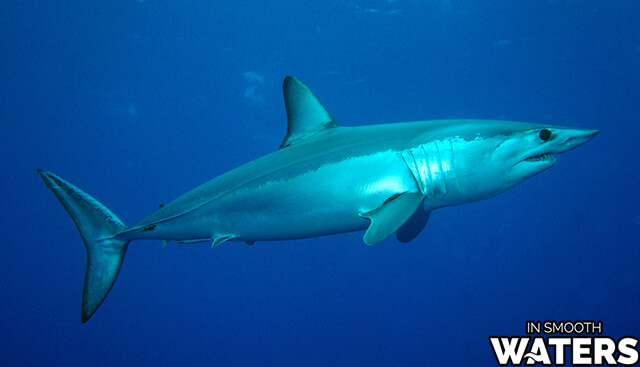
This predator lives in the open ocean and reaches lengths of up to 12 feet and weights of about 1,200 pounds. They swim up to 45 miles an hour, moving swiftly to capture their prey. They can withstand cool water because they have a circulatory system that’s similar to the tuna’s. These predators are at the top of the pelagic food chain.
Unfortunately, shortfin mako shark numbers are dwindling. Detrimental fishing practices are causing these fish to become vulnerable to extinction.
9. Little Tunny

The little tunny, also called false albacore, can strip a fishing line while swimming at 40 mph.
This fish may not be the fastest in the ocean, but it’s in the top ten and makes for excellent sport fishing.
Its streamlined body makes it swift in the water. This fish is more compact than other types of tuna. Due to its body composition, this fish has endurance as well as speed.
Although you might think that this fish gets its name from its similarity to the tuna, it doesn’t. “Tunny” comes from a Greek word that means “to rush” or “to dart.” Shaped like a torpedo, this fish moves like a bullet.
8. Atlantic Bluefin Tuna
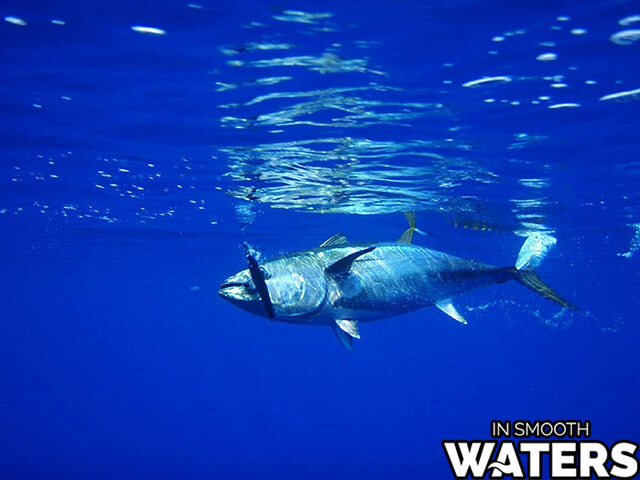
The Atlantic bluefin tuna is impressive for several reasons. It is the largest tuna, growing up to 3 feet long within three to five years of age. But when this fish hatches, it is almost microscopic. It grows to be one of the biggest predators in the open ocean.
Atlantic bluefin tuna reach speeds of up to 40 mph and go on long migrations each year. They can also dive up to 3,300 feet below the ocean’s surface. They must keep moving to gather oxygen from the water in order to survive.
All fish are cold-blooded, which means that they take on the temperature of the surrounding environment. Bluefin tuna have a distinct blood vessel configuration, which keeps them warmer than the water around them. This may not help them swim fast, but it allows them to stay warm in cooler parts of the ocean.
7. Bonefish
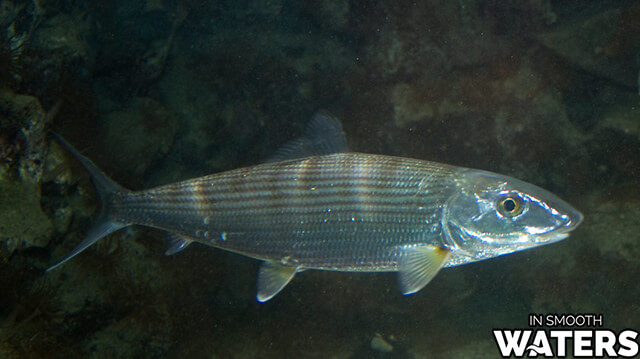
While a blue shark can be up to 13 feet long, a bonefish usually does not grow longer than 19 inches. It can, however, reach lengths of up to 31 inches. Bonefish near Hawaii and Africa can weigh up to 20 pounds, but those in the Western Atlantic Ocean tend to be smaller.
Still, the bonefish is surprisingly strong for its size and can swim almost as fast as the shark, reaching speeds of up to 40 mph. These fish tend to be alert and responsive, especially in comparison to other fish. They will flock to prey but will try to escape just as quickly if they feel threatened.
These fish are fun to catch, but most people don’t eat them because they have so many bones. They thrive in oxygen-deprived areas of the ocean because they have a specialized chamber in their bodies that holds extra air.
6. Blue Shark
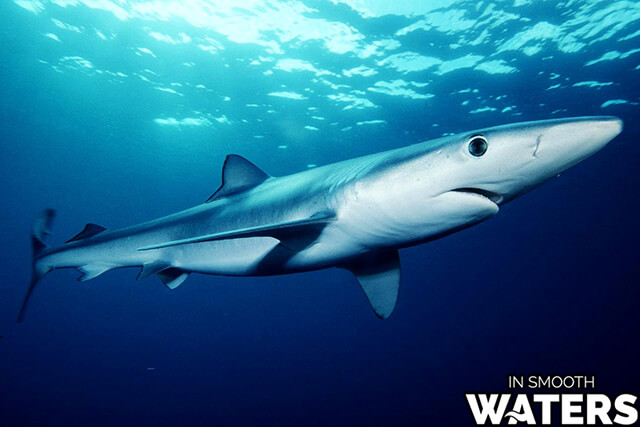
The blue shark swims at speeds of up to 43 mph, which might seem scary if you’re swimming with them. These sharks are not very aggressive, but they are considered dangerous to humans. Even so, they tend to concentrate their feeding habits on small fish and squid. They usually only run into humans when people are scuba diving.
(You might be interested in reading about the other Dangerous Fish in the Ocean)
Can you imagine swimming across the entire ocean? Blue sharks do this more than once in their lifetimes. Perhaps their speed helps them with this lofty feat. (Actually, they conserve a great deal of energy during their migrations by using their pectoral fins to ride the currents).
These fish use their speed to propel themselves out of the water and swim gracefully when submerged. They swish their tail back and forth to glide through the water. The powerful movements allow them to swim long distances to follow their prey.
5. Wahoo
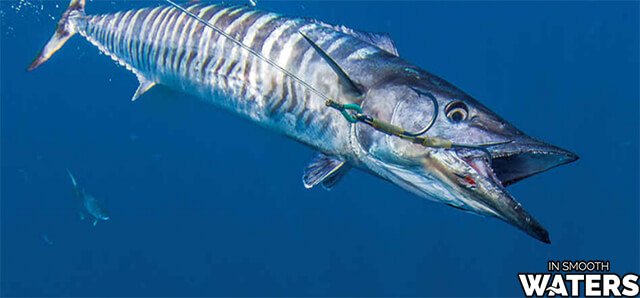
If you were able to yell, “Wahoo!” as you swam through the water at speeds of up to 48 mph, would you do it? This fish doesn’t make that noise, either, but it does swim quickly in brief bursts as it chases its prey. Wahoo don’t just swim fast; they also grow quickly. Although they don’t get as large as Atlantic bluefin tuna, wahoo can grow up to 7 feet long and almost 200 pounds in weight.
(You can read about the other Largest Fish in the Ocean)
Because these fish are so fast, they’re some of the hardest to catch. They don’t usually travel in large schools outside of the mating season.
4. Striped Marlin
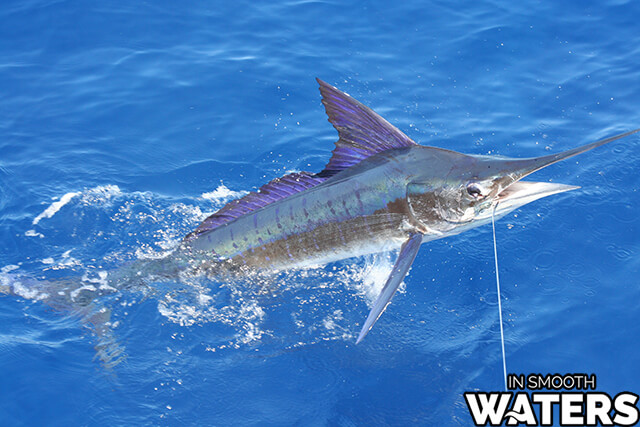
Another type of sailfish, the striped marlin, can swim up to 50 mph. These fish are more extensive throughout the Pacific Ocean than other sailfish because they withstand cold temperatures.
A striped marlin’s stripes change depending on the animal’s mood. The stripes are usually dark blue. When the fish is worked up, however, the stripes become lighter, transforming into pale purple or bright blue. The color change usually happens when the fish is pursuing a mate or prey.
Don’t confuse these fish with the blue marlin, which has subtler stripes. This is the only fish in the marlin species that retains its stripes after it dies.
The striped marlin is a popular sport fish. In fact, humans are practically its only predators. Although this fish is not endangered, some experts recommend throwing it back and avoiding consuming it to keep its numbers plentiful.
Anglers enjoy catching marlin because they’re so strong and agile. Reeling them in is like wrestling with someone several times your size.
3. Swordfish

Swordfish can swim at speeds greater than 60 mph. One of the reasons that they can move so fast through the water is that their head has a superhydrophobic surface. That means it resists water.
The swordfish has a gland that secretes a natural, oily lubricant that contains fatty acids. As this liquid comes out through small pores and blood vessels, it coats the fish, repelling water and increasing its speed. The oily coating could reduce drag by up to 20 percent.
The gland, which is located at the base of the long, spear-like bill, makes that spot on the “sword” weak and vulnerable to injury, though. But the tip of the bill is rough and agitates the water as the fish swims. This “thins” the water and reduces drag, helping the fish swim faster and more efficiently.
2. Sailfish

The sailfish, which is found in the Indian and Pacific oceans, is related to the black marlin and reaches speeds of up to 68 mph. To put this in perspective, it also swims faster than a cheetah can run.
This fish is known for its impressive dorsal fin, which almost spans the body’s entire length. The large fins act like a fence to prevent prey from escaping the sailfish’s grasp. The sailfish also uses its spear-like bill to slash predators and prey. If luck is on the sailfish’s side, a predator can easily become a fresh snack.
Sailfish are constantly moving. Their constant motion, combined with their speed, makes them challenging to snare. Perhaps that’s why they’re such popular sport fish. Catching one is a reward in itself.
These fish tend to hang out where there are currents and temperature breaks. You may find them near shipwrecks and reefs. Catching a sailfish is not a solitary practice. You need to work as a team to spot, hook, and reel in this huge, fast fish. It’s not unheard of for sailfish to damage boats.
1. Black Marlin
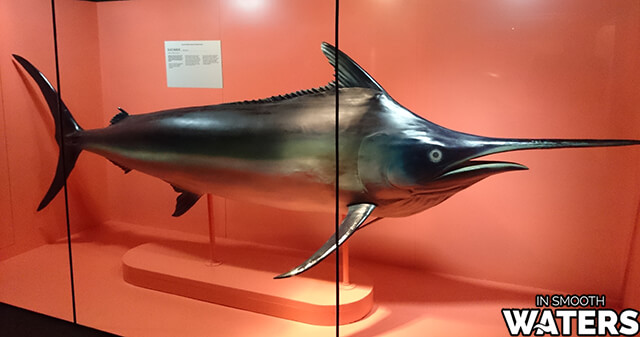
The black marlin is the fastest fish in the ocean. It supposedly reaches maximum speeds of 80 miles per hour, but some experts report that those claims are exaggerated. If black marlin swim at 80 miles per hour, it’s likely that they don’t do so for long. Rather, they swim quickly in short bursts.
These fish are prized by sport fishermen. They grow almost as large as blue marlin, recording weights of up to 1,500 pounds, and they also migrate long distances. They tend to stay in surface waters far off at sea. However, younger fish may stay closer to the coastline, where fortunate anglers have a better opportunity to test their luck against the fish’s speed.
During full moon cycles, these fish travel farther than usual because their prey descends to deeper depths, and the black marlin must cover more distance to snag food.Although it’s impossible to distinguish a male from a female black marlin based on its features, the female grows larger.
Related:
Biggest Fish in the Ocean List: 10 Astounding (and Unknown?) Creatures
A Few Other Speedy Fish Worthy Of Mention
Besides the ten fish above, here’s a couple of other speedy fish that didn’t quite make the list:
- Four-wing flying fish – 35 mph
- Indo-Pacific tarpon: 35 mph
- Southern bluefin tuna: 37 mph
- Yellowfin tuna: 46 mph
Whether you’re sailing, snorkeling, fishing, or scuba diving, coming across one of the fastest fish in the world is exciting. However, it can be a bit intimidating because some of these fish are closer in size to your car than they are to you.

